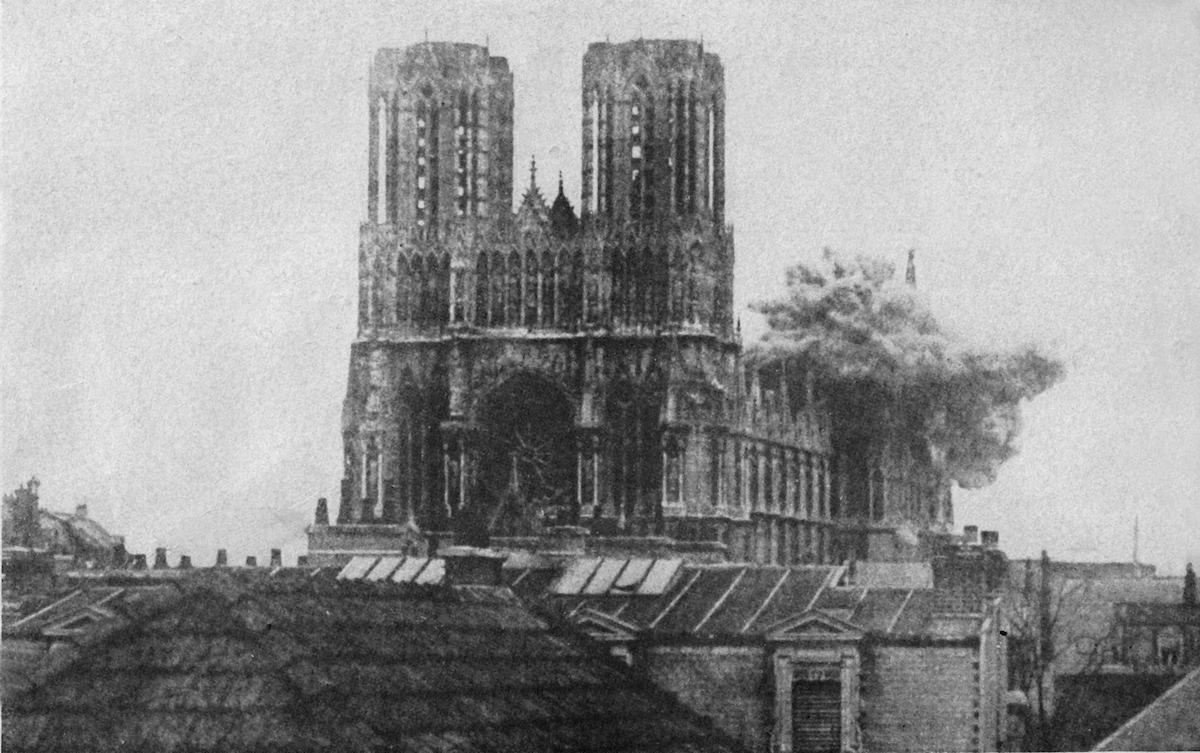Only today, mutiliated, she rises in desolation: Only today, mutiliated, she rises in desolation.
— (image) Collier’s New Photographic History of the World’s War (1919), page 86.
— (image) Collier’s New Photographic History of the World’s War (1919), page 86.
The views constructed by architects on their drawing-board and CAAD simulations are imaginary, and notwithstanding, the city reveals its structures only under moments of erasure. Here we must distingush between the view of a city under destruction and the bombardier’s view and qualify the two observer positions as they instantiate a spatial organisation. We evidence, respectively in these observer positions, an architectural position and positions of disciplines that have alienated from the architectural in time, yet these disciplines continue to operate on the city.
— A city machine: A concise history of 20th century cities as captured under shellfire.

Footnotes
- Georges Bataille in Notre-Dame de Rheims: To some youths of Haute-Auvergne (~1920 or ~1940)

